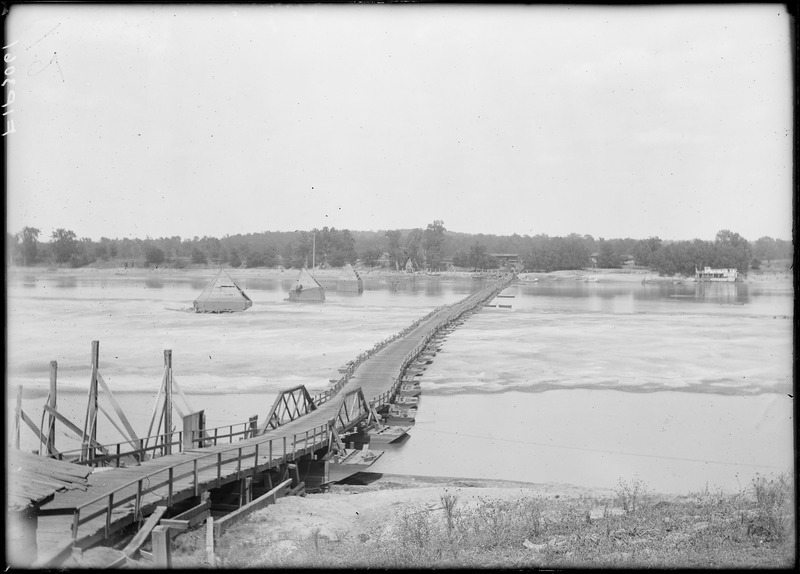It also might be worth checking out TM 5-279, a WWII era tech manual on constructing expedient suspension bridges in the field, using wire rope. As I recall, there is good technical info in there, especially regarding anchorages.
Try here:
https://archive.org/details/TM5-279
As a Boy Scout, we built bridges using a set of lashed shears at each end, with a foot rope and two hand ropes. They never crossed anything though, just hung over a grassy field, but it was a good experiment. I'll see if I can find a reference in the Pioneering Merit Badge or Field Books. It was a little precarious, but worked. My understanding is that the vertical distance between foot rope and hand ropes is critical to stability.
On edit:
Here's a link to an online version of the Pioneering Merit Badge book, with instructions for a slightly different version from what I remember:
https://pioneeringmeritbadge.org/double-a-frame-monkey-bridge/
The style I've built only had a single set of shear legs at each end, whereas this one uses a double shear (more like a W than an X). This version looks more substantial than what we did when I was a kid, and is probably better for a semi-permanent installation.
A possible alternative might be a cable way of some sort. There was a very crude one across a creek at the old fish hatchery where we sometimes stayed as Boy Scouts. No longer a fish hatchery and having been passed to the local university's forestry department, there was still a cabin and sauna and other appurtenances, including the cable breeches buoy to cross the creek. I know of at least one other such setup near-ish to me, across a much larger river and gorge. One can also be seen here:
40°24'31.4"N 109°14'05.5"W
(Just put that in Google Maps, and drop "peg man" on the bridge - you'll see the tower on the west side of the Green River. I think this is the Chew Ranch's cable way, independent of the Cub Creek Road bridge. I saw the cable way this past June when we visited Dinosaur National Monument. This is on the road to the historic Josie Morris Ranch.)
YouTube user Michygoss bought a "Sky Mule" and set it up to get her cabin building supplies down a steep hill from the road to her cabin site.
https://www.wyssenseilbahnen.com/en/plantation-cableway-small-cableway/plantation-cableway-skymule/
Not exactly your application, but it might be an alternative style of crossing gizmo.
However, the challenge of building your bridge with natural materials would not be met with a steel cable!

 11
11




 8
8




 6
6




 9
9




 5
5




 7
7




 10
10




 6
6












